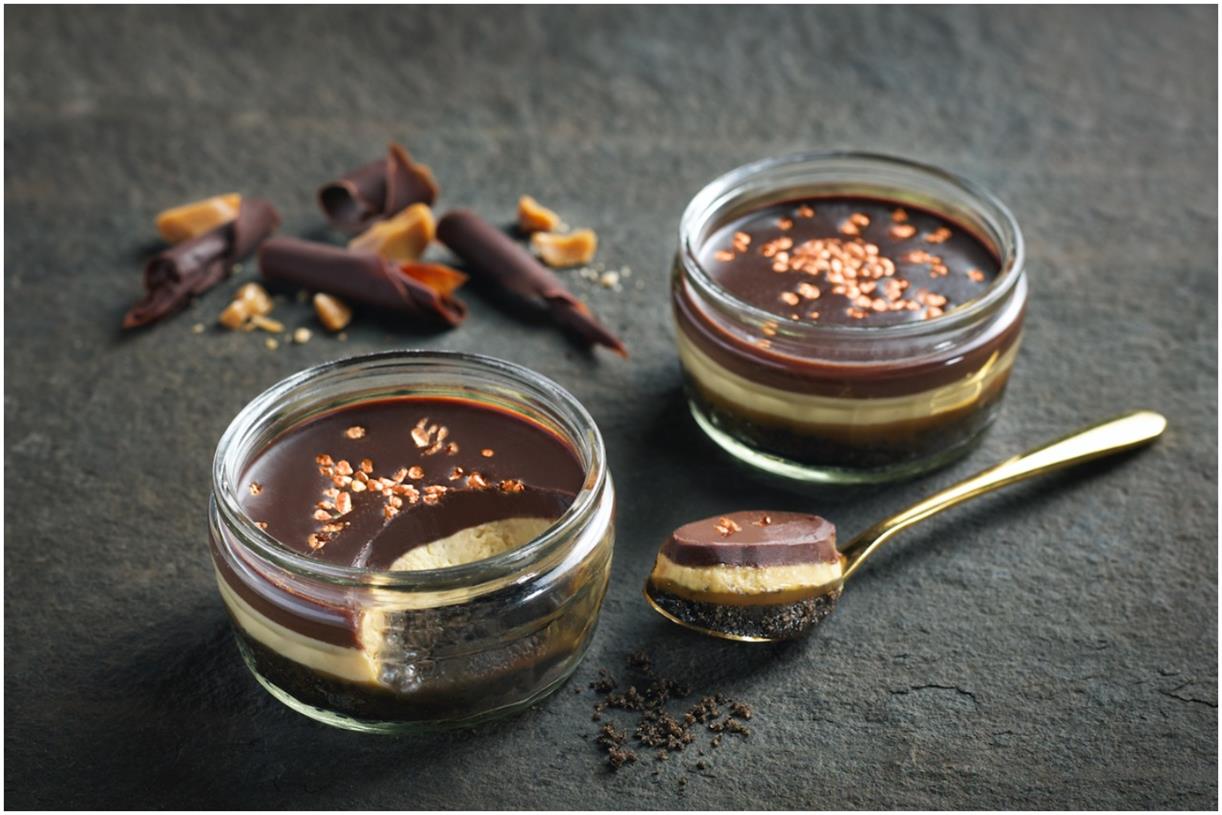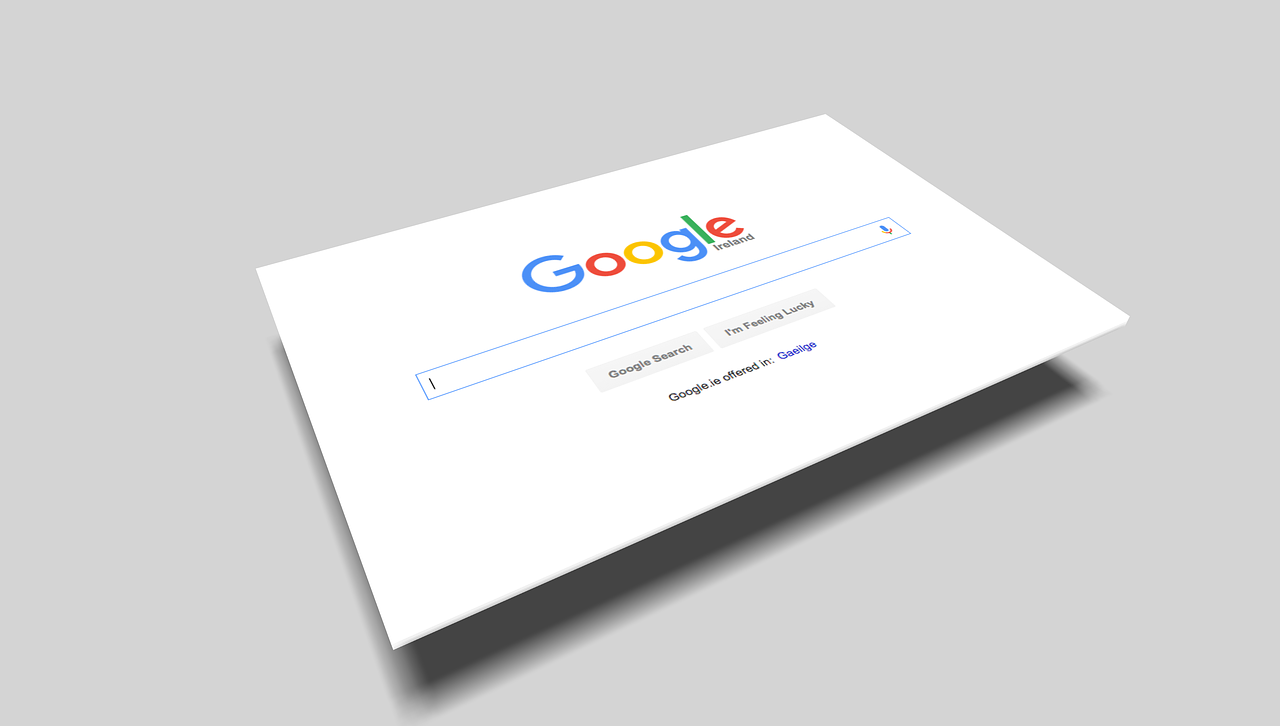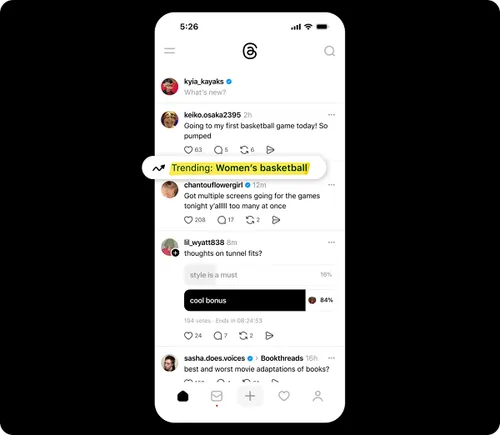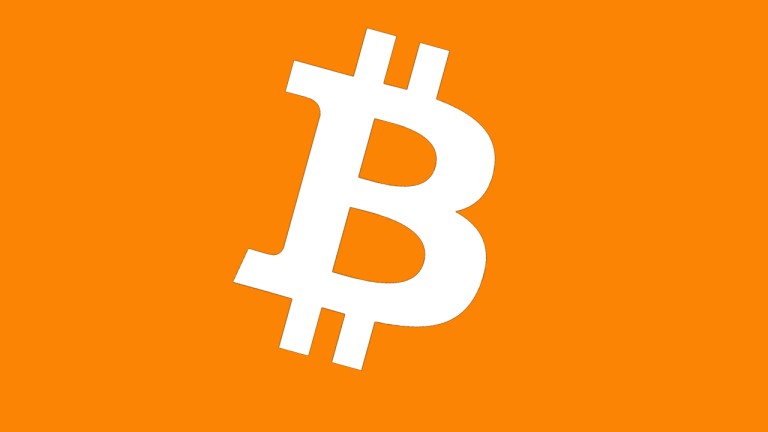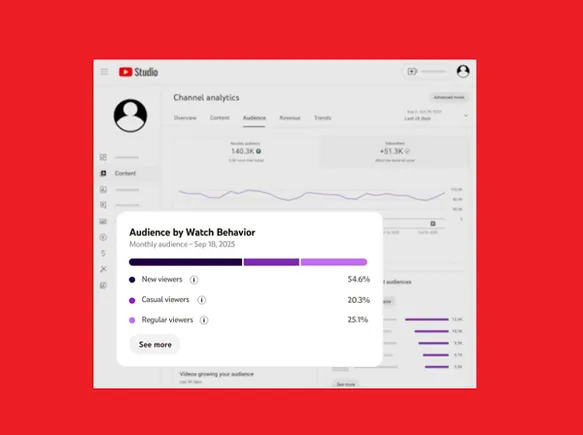12 B2B Marketing Trends You Need To Know in 2022 (Infographic)
This year is likely to be one of great change and experimentation for B2B brands.

Following the latest and greatest B2B marketing trend may not revolutionize your business, but the knowledge can help you keep a pulse on the competition. When you can take a step back and look at your place in the market and the trends impacting it, you’ll be able to make more strategic decisions.
B2B digital marketing is constantly evolving as new technologies take hold and consumers change their purchasing habits. At the beginning of last year, your company probably didn’t have TikTok on its list of marketing channels, but today? It’s definitely worth considering

What Is B2B Marketing?
Business-to-business marketing, referred to most commonly as B2B marketing, is the practice of marketing products or services to other businesses — as opposed to typical individual consumers, which is B2C marketing.
Since businesses aren’t trying to market to the general public, B2B content marketing can focus more on the bottom line for buyers. Most B2B buyers are corporate leaders and decision-makers, so their No. 1 priority is the return on investment (ROI) and how a product or service impacts business. That’s not typically high on the everyday consumer’s list of purchasing needs.
By keeping up with new marketing trends, any B2B marketer can build personalized and competitive campaigns that resonate with B2B customers.
A Snapshot of B2B Marketing Spend
It’s no surprise that the last couple of years have had a major impact on digital marketing spend, due to COVID-19, economic volatility and more. However, B2B marketing spend continues to grow, especially in the digital space. According to data from Insider Intelligence, B2B companies will have increased their digital ad spend by approximately 16.5% YoY by 2023.
With people splitting more of their time between home and the office due to hybrid and remote work, B2B advertisers focused their attention on reaching their target audience through desktop formats. Webinars and interactive virtual events saw a huge increase in popularity.
Looking to the year ahead, many of these trends are anticipated to continue. Digital ad spend is expected to increase by 13% in 2023, which is a return to quicker growth compared to previous years. This is likely due to the increasing return of employees to the workplace, which may lead to companies willing to open up their budgets a little more. Only time will tell.
12 B2B Marketing Trends for 2022
This year promises to be one of great change for nearly every industry — did someone say digital transformation? — so let’s take a look at the trends influencing B2B organizations today.
1. Acccount-Based Marketing
ABM has been a bellwether since 2017 or so. We even wrote an eBook on it.
In recent years, this B2B strategy has only grown in popularity as it brings sales and marketing teams together to transform the typical volume-based lead strategy into a one-on-one approach.
Success with this strategy hinges on a close relationship and synchronization between the sales and marketing teams. Collaboration among sales and marketing stakeholders can help marketers identify the best prospects within the target audience for an ABM strategy.
This type of strategy and interconnectedness of sales and marketing teams is also ideal for small businesses. ABM helps small businesses better focus their marketing effort and spend on top prospects.
Relative to other marketing activities, ABM delivers 97% higher ROI. Practitioners say it helps align sales and marketing and make better use of marketing materials.
2. Marketing Automation Adoption and Integration
The content marketing supply chain is ripe for automation at nearly every stage. From keyword research and creation to distribution and measurement, the proliferation of marketing automation tools, plugins and platforms has made content more efficient and cost-effective than ever. According to a report from Research and Markets, global marketing automation spending is expected to increase to $14,180.6 million by 2030.
Actual marketing automation systems are used by 44% of B2B brands, although other types of martech have even higher adoption rates. These various technologies are often integrated, so automation is practically inescapable in this era of marketing – and that’s a good thing.

3. Customer Experience, First and Foremost
Your B2B marketing strategy needs to be customer-centric. This is one digital marketing trend that will never go away. Customer experience has played a huge role in many of the transformative efforts developed as a result of marketing digitalization. Could you imagine going to a virtual trade show 5 years ago? Probably not.
With many B2B buyers working from home, brands focused more heavily on creating engaging, interactive experiences. This, of course, came with challenges. After all, people stuck at home are surrounded by distractions including every piece of media ever created. How do you compete for someone’s attention when they can pull up the latest theatrical movie release on their smartphone?
Interactive elements like surveys, polls, games and breakout sessions can help any B2B brand capture the attention of audience members. More immersive digital experiences are still needed to engage audiences that are already growing bored with basic webinars.
These trends are certainly influenced by generational demographics. Presently, as much as 51% of lead B2B buyers and financial approvers are now millennials, so the above customer-experience expectations are innately ingrained into their lifestyles and purchasing habits. Especially based on their upbringing in digital-first environments. A large B2B software vendor, for example, must have faster problem-resolution protocols and authentic organic search presences that they may not have needed years ago.
Bad reviews on Google My Business, negative commentary on social media and a lack of positive referrals can lead to irreparable reputational harm and fewer leads. Furthermore, poor UX on mobile sites and apps, incessant cold calls or emails and difficulty locating information online immediately turn off today’s B2B buyer, eroding trust, loyalty and satisfaction.

B2C brands have dealt with this reality in front of our eyes, but B2B brands will now confront the same customer-experience challenges moving forward.
4. Artificial Intelligence
One of the ways companies are addressing CX needs is through the use of artificial intelligence (AI). Chatbots, for example, give consumers a convenient way to get an answer to a simple question. Many businesses have streamlined basic helpdesk processes with chatbots, basically functioning as customer self-service. This frees up customer service agents’ time to solve more complex problems.
Chatbots have certainly grown in adoption, but they are but one variation of AI for marketers. Programmatic advertising marketplaces are more commonly integrating AI into their ad buying techniques, connecting publishers and advertisers with more efficiency, speed and accuracy – and at a price point that’s already pre-set within the system.
AI is still relatively nascent in the content marketing industry from the standpoint of actual production. It can help decipher structured data sets and pull out key insights through machine learning, but turning that information into organic content is much more difficult.
That’s not stopping marketers from experimenting, however. And rightfully so.
For example, a tool like MarketMuse can help B2B marketers better understand what their audiences want to read about. Leveraging machine learning, MarketMuse quickly analyzes search engine results pages (SERPs) to offer customized guidance on how to improve SEO efforts. In niche B2B industries, this insight can make the difference between ranking in the top spot and not ranking at all.
5. Video Marketing and Augmented Reality
Now that advanced digital marketing strategies like video content and augmented reality are more accessible, these are tools that B2B marketers shouldn’t overlook.
Video marketing is especially powerful for B2Bs, and can bring a more visual aspect to the buyer’s journey. Currently, more organizations are leveraging case studies for video content to support their marketing efforts. And this trend is creating traction in the B2B market – right now, 70% of B2B buyers watch videos as part of their product research ahead of conversion.
Video advertising spend is likely to continue increasing in 2022. Streaming video has grown into something akin to a survival tool as people spend more time at home. Videos not only entertain but also educate. B2B buyers can benefit from branded videos by learning about new trends and gaining new skills. Global video advertising spend is expected to grow to $95 billion by 2024, up from $62 billion in 2021.
Augmented reality, on the other hand, can take video content to new heights. This is particularly true when the B2B company has a physical product to show off, or a visually impressive facility to tour. AR can be the ideal way to support the B2B buyer journey, enabling customers to digitally try before they buy.
6. Podcasts
In 2021, there were more than 850,000 active podcasts. Considering that more than half of all U.S. adults listen to one or more podcasts each month, they represent a viable path to reaching engaged customers. In fact, podcasting ad revenue is anticipated to surpass $1 billion this year.
Brands that produce their own podcasts have a great opportunity to make deeper connections with their listeners. Podcasts can be more informal than traditional content marketing efforts, which allows customers to glimpse the personality of the people behind their favorite brands. So while podcasting isn’t new, there’s never been a better time to get in on the action.
And then there’s another side of podcasting: shows about marketing that aim to help B2B sellers grow. They may not be as universally intriguing as Last Podcast on the Left, Serial or NPR’s Hidden Brain, but podcasts about marketing can definitely teach you a thing or two.
IdeaCast from Harvard Business Review and Content Champion from Content Marketing Institute have been long-running marketing podcasts of acclaim, and more recently, Searchmetrics launched Voices of Search. We’re also moving with a full head of steam with our podcast Above the Fold.
B2B marketers have now jumped fully into bed with podcasts, viewing them as the ideal format for connecting with on-the-move auditory audiences. As Google Trends data shows, we’re nearing peak saturation in this market, however:

7. Lead Conversion (Not Just Lead Generation)
As B2B brands’ marketing matures, more of a focus is placed on actual macro conversions.
We know blogs drive traffic, which can be funneled toward gated content, generating leads. But how valuable is a lead that never ever actually makes it toward the bottom of the sales funnel?
Content can help at this stage as well.
Currently, B2Bs are using more eBooks and guides, alongside digital and hybrid events like webinars to secure leads. Content including newsletters, blogs posts and case studies are then leveraged to nurture and convert these prospects.

This type of content is particularly relevant as it not only improves a brand’s visibility but also helps customers make a decision. According to Demand Gen Report’s 2021 B2B Buyer Survey, most of the buyers (80%) considered content as a significant factor in choosing a vendor. When a vendor provides content that makes it easier to build a business case for the purchase, B2B buyers are more inclined to close a deal.
Using these content types can help inch prospects toward signing on the dotted line. And that’s what’s necessary for most marketers to justify their budgets to their CEOs – actual revenue, not just micro conversions. Interactive digital events have the potential to capture customer engagement and turn it into action. By making customized experiences, B2B brands can influence their customers more effectively and ultimately drive them further down the sales funnel.
8. Social Channels Continue To Evolve
With over 706 million members, LinkedIn is still the top place for B2B marketers to reach their audiences. The professional networking site replaced traditional in-person events almost completely in 2020, which means even more professionals are engaged on the site. LinkedIn’s live streaming feature enables brands to speak directly with customers and then leverage the recording as a valuable asset going forward.

And while Facebook, Twitter and Instagram remain as top places to reach customers, a new platform gained popularity: TikTok. While the primary demographic on the platform skews young, the same could be said for the early days of any other social networking platform. Getting on board now can position B2B brands to grow their influence on the platform greatly in 2022 and beyond. The video-centric platform is perfect for creative marketing efforts that have a chance to go viral.
9. Local Search Optimization
One underrated and potentially overlooked component of 2022 SEO is local search.
Google My Business listings have traditionally been most useful for consumer-facing brands with geo-targeted marketing and sales strategies. Google Maps and organic results in Google SERPs scrape business data from GMB, allowing searchers to find info about organizations, the products they sell, their physical locations, their contact info and user reviews.
B2B brands have been much slower to adopt Google Maps marketing strategies or even to completely populate their GMB listings, not to mention other online business directories like Yelp, BBB, BizJournals and Glassdoor.
 Via brightlocal.com.
Via brightlocal.com.By forgoing these localized marketing methods, B2B brands may be disrupting the buyer journey of their prospects. If the Knowledge Panel on the right sidebar of Google SERPs displays incorrect information, or it shows that you only have locations in certain regions, searchers may just turn away, believing you’re not equipped to help them in their journey.
10. Paid Ads
Organic search is just one side of the marketing coin. B2B brands have found that paid search ads can be a quick and measurable way to immediately leapfrog organic listings in Google SERPs and stand out from competitor posts.
For example, the search term “content for SEO” only returns two results above the fold. One is a featured snippet from Yoast and the other is an ad from SEMrush.

But what about the other 10 or so listings that are also supposed to appear on Page 1?
Those positions belong to big industry names like Moz, Wordstream, Search Engine Land and Neil Patel, but you would never know it because THEY DON’T SHOW UP without a user having to scroll down to find them. That’s the benefit of paid ads – immediate SERP ownership over competitors.
While all the statistics cite organic content marketing generates three times as many leads as paid ads, that’s not the whole story. For commercial-intent keywords, search ads actually receive twice as many clicks as organic listings.
So, the lesson is that informational or navigational content may not be suited for paid ads, but commercial content is. Don’t waste your money paying for advertising campaigns built around wrong-intent keywords.
That’s why combining paid and organic strategies is necessary for brand awareness, SERP visibility and high-intent traffic in 2022. And B2B marketers are taking the hint – 54% of large companies are leveraging paid ads alongside content marketing.

In addition, brands that spend heavily on pay-per-click (PPC) campaigns should be aware of the coming elimination of tracking cookies. Without access to robust customer data, B2B marketers will be on the lookout for new ways to identify and reach their customers through ad networks in 2022.
11. Re-Optimization
There’s too much content on the web. We know that.
So flooding SERPs with new content isn’t really the best way to break onto Page 1. Since fresh content requires starting from scratch with external link accrual and waiting for Google to actually index and rank your page, your time-to-rank can be too long to produce the results you’re looking for more immediately.

And as the chart above shows, if you’re not ranking in the top three spots in SERPs, you practically don’t exist.
Re-optimizing existing posts, on the other hand, allows you to retain your current URL structure and your page’s already-earned link equity and SERP positioning – you’re just making it even better!
“Better” could mean updating data with more recent findings, replacing older imagery and expanding upon certain subtopics to improve the comprehensiveness of the page as a whole.
We’ve followed this process for over a year now and the results have been just as we expected, including getting 65% of our product landing pages ranked on Page 1 of Google.
B2B brands are currently ramping up their development of research-driven content and short-form content, specifically. Blog posts (less than 3,000 words) are ideal formats for continuous optimization over time, as they typically need just minor adjustments to propel higher in SERPs year after year.

12. Email Personalization
In addition to LinkedIn, marketing via email has been a rock-solid distribution channel for B2B marketers. Roughly 40% of B2B marketers say email marketing is their most critical channel for success.
Personalization has also been a goldmine to increase the margins on email even further. 74% of people dislike being shown irrelevant content, which makes personalization a vital part of future email marketing strategies.

Because of the number of templates and tools on the market that simplify outreach, personalize messaging and segment audiences, it’s no longer a game of mass email blasts with low response rates; brands can now better measure and predict the success of their email campaigns.
According to Campaign Monitor, personalized emails have proven to increase open rates by 26%, and marketers have found a 760% increase in email revenue from segmented campaigns.
Final Takeaway
B2B brands are still finding their feet in 2022. This year is likely to be one of great change and experimentation. Staying up with the latest trends will help you focus your marketing efforts and adapt to the new normal — whatever that ends up looking like.
Editor’s Note: Updated June 2022.

 Tekef
Tekef 










_1.jpg)

![50 Video Marketing Statistics to Inform Your 2022 Strategy [New Data]](https://blog.hubspot.com/hubfs/marketer-uses-data-to-create-videos%20%281%29.jpg#keepProtocol)
